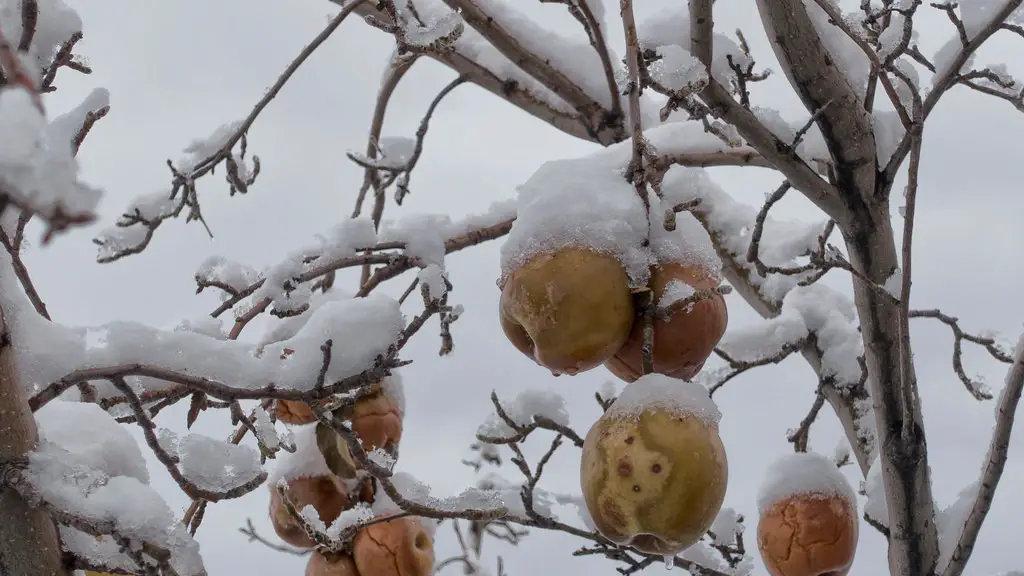Growing an apple tree can be a rewarding experience and may not require as much work as you think. Apples are an incredibly hardy fruit and can be grown in a variety of climates. That said, there are guidelines to follow to ensure your apple tree will bear fruit. How long does it take for an apple tree to grow? That depends on a few factors.
The first factor to consider is the specific variety of fruit you are growing. Some types of apples are faster growing and may bear fruit in just a few years, while others can take up to seven or eight years. In general, most apple trees will begin to yield harvests after three to four years.
The second factor is how you are planting your apple trees. If you are planting from the roots up, it can take up to four years for the tree to yield fruit depending on the root system at the time of planting. If you are planting from a sapling, which already has a root system, then the tree will usually bear fruit in that same year.
The third factor is the environment and soil in which the tree is planted, as well as climate conditions throughout the year. If all the conditions are ideal, apple trees can grow faster, but this is not always possible if the local conditions are not ideal.
The fourth factor is the amount of care you put into it. Properly pruning the tree and fertilizing the soil can result in faster growth. Over the course of the next few years, an apple tree should start to bear fruit, and with proper care, it can produce a good yield.
Types of Apple Trees
There are various types of apple trees available for growing in the home garden. Some of the more common types are the standard apple tree, the dwarf apple tree, and the semi-dwarf apple tree. In general, the standard type is larger and can grow up to twenty feet high, while the dwarf types are smaller and typically reach heights of twelve to fifteen feet.
Standard apple trees require more work as they require more pruning and are more prone to disease and pests. However, they also yield larger harvests and can be more productive over the long term. Dwarf and semi-dwarf apple trees are better suited for smaller gardens and require less maintenance. They may not reach the full yield of a standard type, but they can still produce a good amount of fruit.
No matter what type of apple tree you choose, it’s important to have patience and recognize that an apple tree can take up to four or five years to reach full productivity. Having a reliable source of water and a good fertilizer is important for any apple tree.
When it comes to apple trees, be sure to research the variety you are planting and the environment in which it will be planted. Doing this can help ensure a productive, healthy tree in less time.
Pollination and Apple Trees
Pollination also plays a crucial role in the health of apple trees. Without it, fertilizer and abundant sunlight may not be enough to produce a good harvest. Apple trees require cross-pollination, which means two or more different varieties of apple trees are needed in order to produce a good harvest.
Because of this, it’s important to select two or more types of apple trees that bloom at different times. This ensures that they do not only bloom and bear fruit separately, but that they also have time to cross-pollinate each other. If you have a smaller orchard and don’t have space for multiple apple trees, you may want to consider planting a pollinator variety.
Pollinators are varieties that are specifically bred to help other types of apple trees produce a better harvest. They do not produce fruit of their own, but they can be a great addition to any orchard. Always be sure to read up on the varieties you are planting in order to choose the best combination for cross-pollination and a greater yield.
By understanding the complexity of pollination, the type and variety of apples you want to grow, as well as the environment you will plant them in, you can ensure your apple trees will bear fruit in a reasonable amount of time.
Climate and Apple Trees
Another important factor when it comes to how long it takes for an apple tree to grow is the climate of your area. Apples are a resilient fruit and can tolerate a variety of climates, but each variety of apple tree is best suited for particular climates.
If you live in a colder climate that experiences frost for long periods of time, then you may want to consider a variety of an apple tree that can tolerate cold temperatures and a shorter growing season. For warmer climates, there are certain varieties that can better survive the heat and humidity. Depending on the region you live in, you may want to choose a variety of apple tree that specifically suits the climate.
In any case, it’s best to research the variety you want to plant and the environment before committing to a tree. This can help ensure your apple tree will reach a harvestable size in a reasonable amount of time.
Maintenance and Apple Trees
Proper maintenance is an important factor to consider when growing your apple tree. Proper pruning and trimming can help the tree produce healthier and larger fruit, as well as encourage new growth.
Additionally, regular fertilizing of the soil can help an apple tree to grow faster and larger. Apple trees need a lot of nutrients to grow, so be sure to provide them with ample nutrients by selecting the right fertilizer for your area.
Weed control is also important when it comes to apple trees. Weeds can compete with the tree for nutrients and rob them of the water and sunlight they need to flourish. Take the time to pull any weeds that come up regularly and watch the area around your apple tree.
It may take a few years for an apple tree to reach maturity, but proper maintenance throughout these years can help it grow faster and healthier. With regular pruning and fertilizing, you can be sure your apple tree will bear fruit in a few short years.



